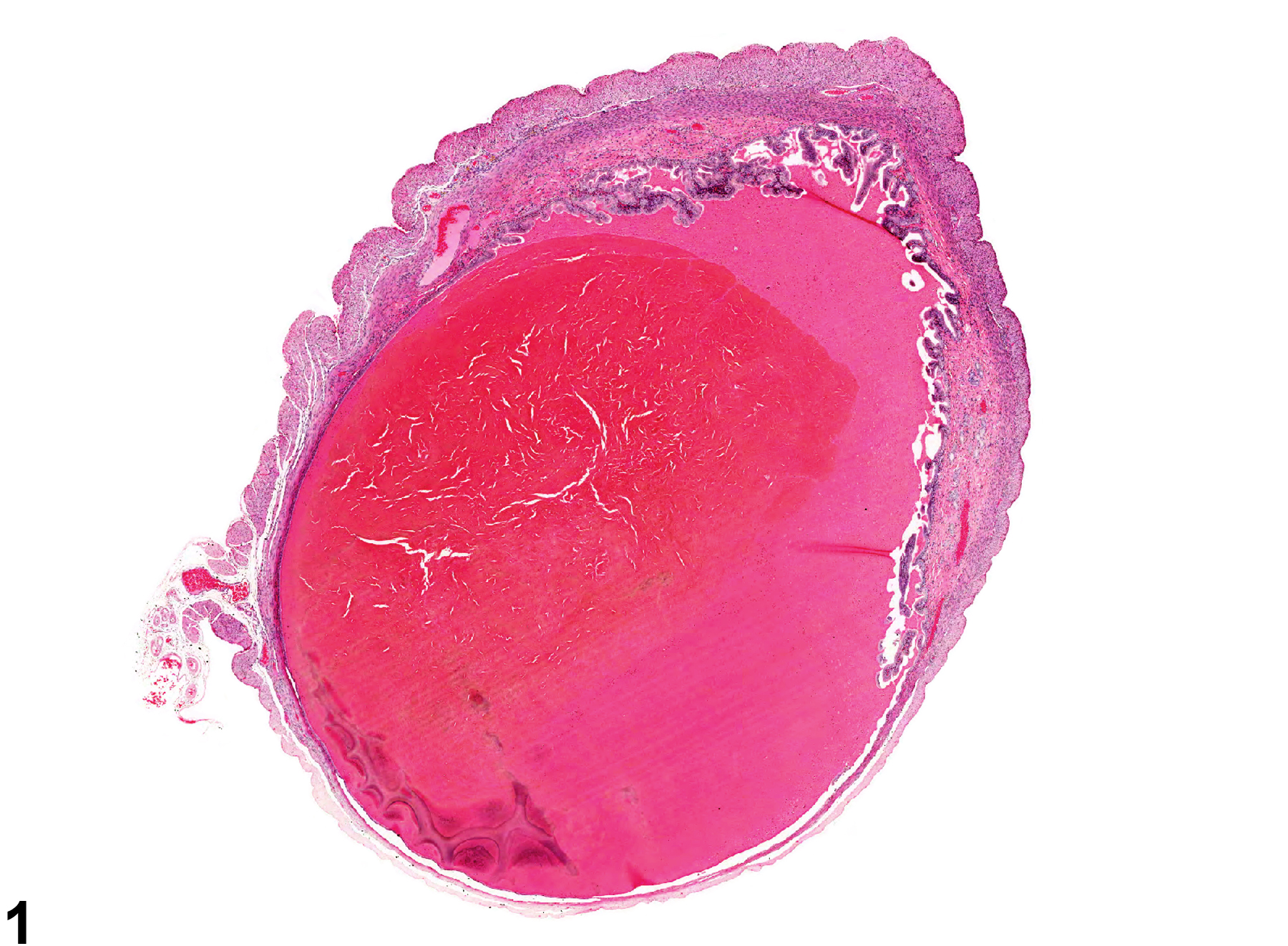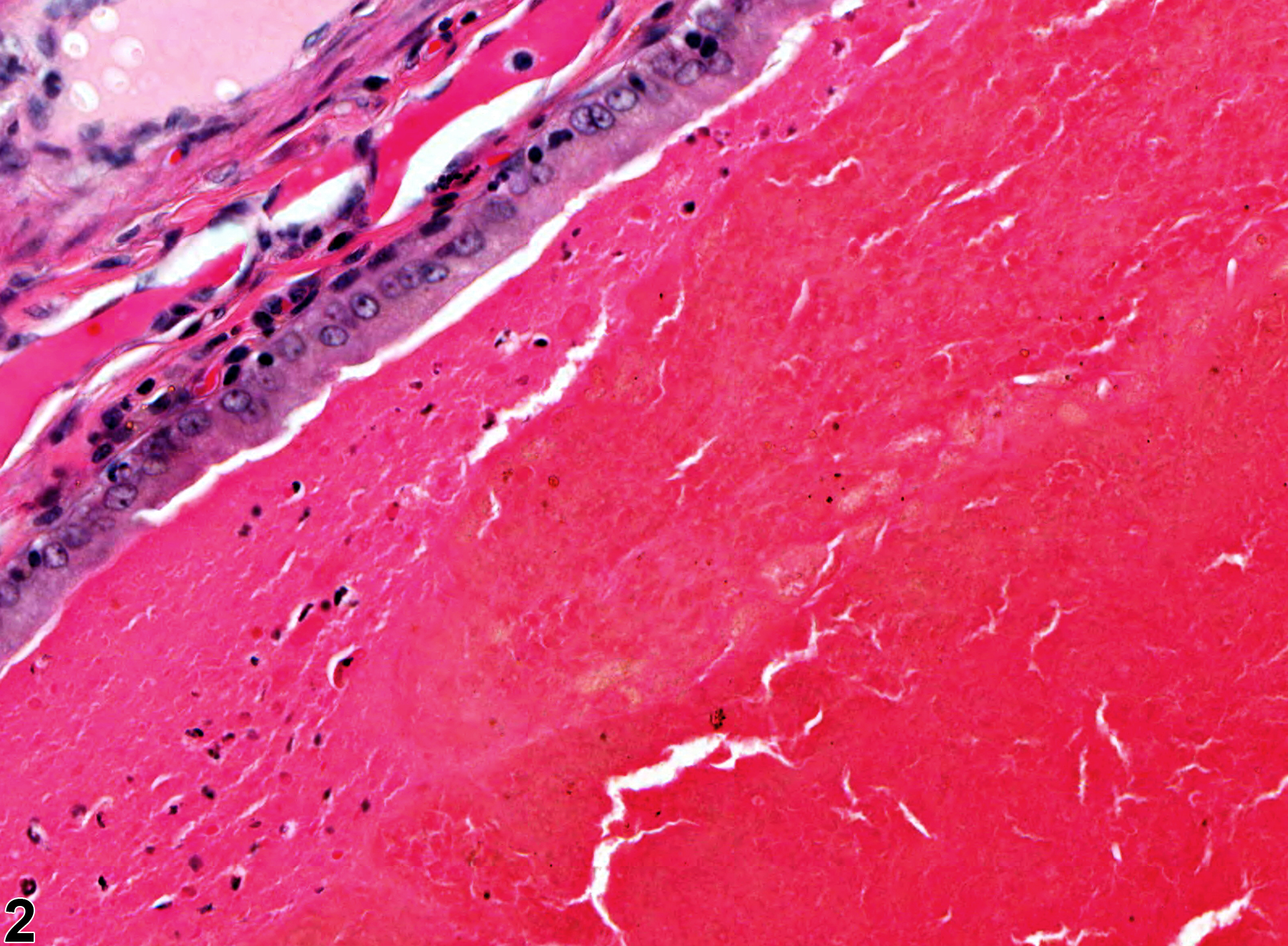Reproductive System, Female
Uterus - Hemorrhage
Narrative
Uterine hemorrhage (Figure 1 and Figure 2) is seen occasionally in rats and mice. It is often associated with mononuclear cell leukemia in F344 rats. When chronic hemorrhage occurs, hemosiderin-laden macrophages, cholesterol clefts, dystrophic calcification or mineralization, and fibrosis may be evident. This may occur in the lumen, endometrium, and/or myometrium. Uterine hemorrhage must be carefully examined for evidence of endothelial proliferation that would indicate the presence of an underlying process, such as endothelial hyperplasia, hemangioma, or hemangiosarcoma.
Uterus - Hemorrhage should be diagnosed and graded. If it is secondary to another process (e.g., inflammation, neoplasia), it should not be diagnosed unless warranted by severity but should be described in the pathology narrative.
Leininger JR, Jokinen MP. 1990. Oviduct, uterus and vagina. In: Pathology of the Fischer Rat (Boorman GA, Eustis SL, Elwell MR, Montgomery CA, MacKenzie WF, eds). Academic Press, San Diego, CA, 443-459.
Maekawa A, Maita K. 1996. Changes in the uterus and vagina. In: Pathobiology of the Aging Mouse (Mohr U, Dungworth DL, Capen CC, Carlton WW, Sundberg JP, Ward JM, eds). ILSI Press, Washington, DC, 469-480.
National Toxicology Program. 1989. NTP TR-354. Toxicology and Carcinogenesis Studies of Dimethoxane (CAS No. 828-00-2) (Commercial Grade) in F344/N Rats and B6C3F1 Mice (Gavage Studies). NTP, Research Triangle Park, NC.
Abstract: https://ntp.niehs.nih.gov/go/6969
Uterus - Hemorrhage in a female F344/N rat from a chronic study. There is accumulation of blood in the uterine lumen.



